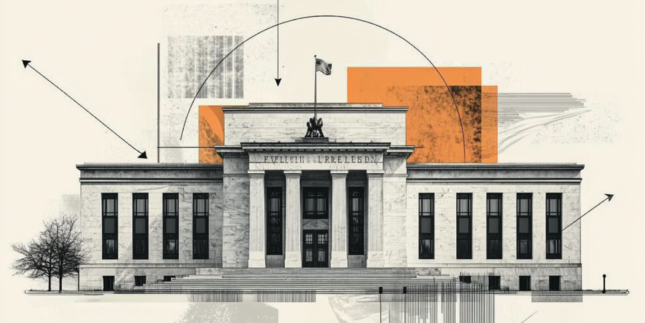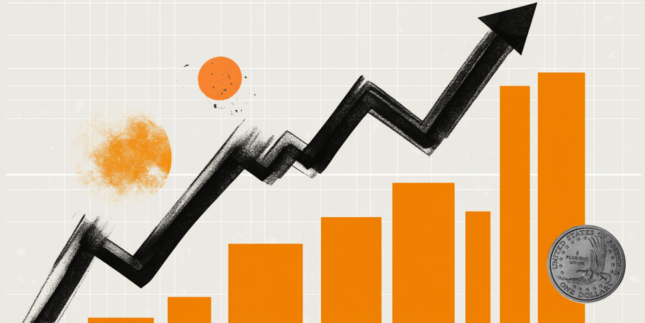Australian Dollar throws the towel as the USD soars on risk-off mood
- Traders remain wary of potential US tariffs on Canada, Mexico, and the European Union, fueling global uncertainty.
- PCE and GDP data from the US came in strong.
- Reserve Bank of Australia Deputy Governor Andrew Hauser emphasized the need for stronger inflation evidence before further policy moves.
- China’s PBC Deputy Governor Lu Lei proposed special treasury bonds to bolster major state-owned banks, underscoring potential effects on Australia’s resource exports.
The Australian Dollar (AUD) loses ground against the US Dollar (USD) for the fifth consecutive day on Thursday. A prevailing risk-off mood, combined with renewed United States (US) tariff threats, underpins the Greenback’s strength alongside strong inflation and GDP data. Meanwhile, the Reserve Bank of Australia (RBA) maintains a cautious stance as it grapples with lingering inflation challenges.
Daily digest market movers: AUD pressured by tariff concerns and subdued capital spending
- The Aussie extends its losing streak, further weighed by softer-than-expected Private Capital Expenditure data, which declined 0.2% in Q4 2024 instead of the forecasted 0.8% gain.
- RBA Deputy Governor Andrew Hauser reiterated optimism for eventual inflation improvements but insisted on seeing tangible progress before altering the bank’s trajectory.
- On the Chinese front, the People’s Bank of China Deputy Governor Lu Lei signaled support for new treasury bonds to boost key banks’ equity levels. This development may impact Australian commodity exports if Chinese growth slows.
- US trade authorities published contradictory statements on scheduled tariffs against multiple trading partners, including Canada and Mexico, leading to persistent uncertainty in financial markets.
- Recent US data showed second-estimate GDP growth at 2.3% annualized in Q4, while the core Personal Consumption Expenditures measure climbed to 2.7%, reinforcing the Federal Reserve’s hawkish lean on inflation.
AUD/USD technical outlook: Five-day losing streak confirms break below 20-day SMA
AUD/USD has lost ground for a fifth consecutive session, declining around the mid-0.6200 zone after failing to hold above its 20-day Simple Moving Average. The Relative Strength Index (RSI) hovers in a lower range, declining sharply and signaling weakening bullish efforts. Meanwhile, the Moving Average Convergence Divergence (MACD) histogram prints decreasing green bars, suggesting that upside momentum is fading. The pair’s failure to maintain traction above the 20-day SMA does not necessarily imply a full-blown bearish trend shift. However, further downside cannot be ruled out if tariff news or domestic data significantly dent risk sentiment.
RBA FAQs
The Reserve Bank of Australia (RBA) sets interest rates and manages monetary policy for Australia. Decisions are made by a board of governors at 11 meetings a year and ad hoc emergency meetings as required. The RBA’s primary mandate is to maintain price stability, which means an inflation rate of 2-3%, but also “..to contribute to the stability of the currency, full employment, and the economic prosperity and welfare of the Australian people.” Its main tool for achieving this is by raising or lowering interest rates. Relatively high interest rates will strengthen the Australian Dollar (AUD) and vice versa. Other RBA tools include quantitative easing and tightening.
While inflation had always traditionally been thought of as a negative factor for currencies since it lowers the value of money in general, the opposite has actually been the case in modern times with the relaxation of cross-border capital controls. Moderately higher inflation now tends to lead central banks to put up their interest rates, which in turn has the effect of attracting more capital inflows from global investors seeking a lucrative place to keep their money. This increases demand for the local currency, which in the case of Australia is the Aussie Dollar.
Macroeconomic data gauges the health of an economy and can have an impact on the value of its currency. Investors prefer to invest their capital in economies that are safe and growing rather than precarious and shrinking. Greater capital inflows increase the aggregate demand and value of the domestic currency. Classic indicators, such as GDP, Manufacturing and Services PMIs, employment, and consumer sentiment surveys can influence AUD. A strong economy may encourage the Reserve Bank of Australia to put up interest rates, also supporting AUD.
Quantitative Easing (QE) is a tool used in extreme situations when lowering interest rates is not enough to restore the flow of credit in the economy. QE is the process by which the Reserve Bank of Australia (RBA) prints Australian Dollars (AUD) for the purpose of buying assets – usually government or corporate bonds – from financial institutions, thereby providing them with much-needed liquidity. QE usually results in a weaker AUD.
Quantitative tightening (QT) is the reverse of QE. It is undertaken after QE when an economic recovery is underway and inflation starts rising. Whilst in QE the Reserve Bank of Australia (RBA) purchases government and corporate bonds from financial institutions to provide them with liquidity, in QT the RBA stops buying more assets, and stops reinvesting the principal maturing on the bonds it already holds. It would be positive (or bullish) for the Australian Dollar.
Forex News
Keep up with the financial markets, know what's happening and what is affecting the markets with our latest market updates. Analyze market movers, trends and build your trading strategies accordingly.


















